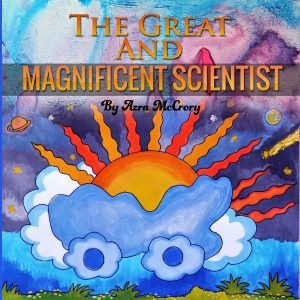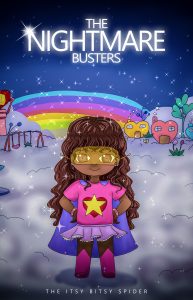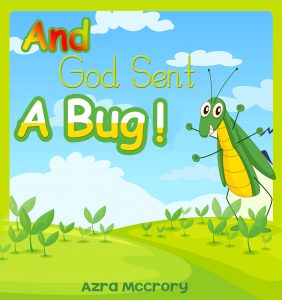WHOLISTIC CHILDCARE

Image Location: http://www.ourkidscanthrive.com/wp-content/uploads/2015/05/rsz_kids.jpg
WHOLISTIC CHILDCARE
BRINGING THE PIECES TOGETHER
What Is It?
You’ve probably heard the term “Holistic Childcare” if you are associated with early childhood. My concept is what I like to call, WHOLISTIC. In short, Wholistic Childcare is about making children whole, through a holistic approach. This is a simple concept, centering around the constructs of the varying aspects of who we are. To paint a picture of Wholistic Childcare, I would say that it’s like constructing a building where the 5 dimensions of a person are the foundational pieces, and everything else is built on that foundation.
In early childhood the term is usually coined, “Holisitc Approach” however, I have come to define my approach to childcare as “Wholistic.” These terms are not different, but instead the Wholistic approach to me is a more defined holistic structure for the early childhood model that I have grown to support and also in relation to what I consider, best practices. In my attempt to share this dynamic subject, I am using this article to build a foundation by giving an educated and in-depth understanding of what I’ve come to know as Wholistic Childcare or my Wholistic Approach to working with children.
How Does the Early Childhood Community Define Holistic Approaches?
I would like to share some other ideas that professionals have regarding Holistic Childcare and Approaches. According to Lissanna Follari of, “Foundations and Best Practices in Early Childhood Education” (2011), a “Holistic Approach” to childcare is where education should be cognitive, physical, and emotional and exist within the context of a child’s life.
According to the Australian Department of Education (2012), Holistic Approaches recognize the connectedness of the person’s spirit, mind, and body within the constructs of learning. When early childhood professionals/educators invest in this type of approach they hone in on the child’s social, emotional, personal, physical, cognitive, and spiritual wellbeing in learning; seeing all these components as relative, integrated, and interconnected to the learning environment. For more information on this particular article from the “Exploring Holistic Approaches for Early Childhood Educators” (3/4/2012), please visit http://www.raiselearning.com.au/blogs/news/5818384-exploring-holistic-approaches-for-early-childhood-educators.
5 Aspects of a Person
Humans are 5 dimensional beings who learn through a variety of ways. 5 dimensions just shows that there are different elements that make up the WHOLE of who we are. For my more visual learners, imagine these dimensions as slices of a pie, or again, building blocks. The 5 dimensions are commonly known as:
- Physical
- Mental/Intellectual
- Social
- Emotional
- Spiritual
By defining the 5 dimensions we can see how they function and get a better understanding of how to exercise them to get the best results in human development. So let’s define them shall we!
5 DIMENSIONS OF THE WHOLE:
According to “What Five Interactive Dimensions Characterize the Life of a Human Being” (n.d.), we have these dimensions of the whole well defined.
Physical – This dimension is connected to the natural world, and the world of the senses being; smell, taste, visual (sight), auditory (hearing), and touch (even nerves). We see with our eyes, we smell with our nose we taste with our taste buds, and hear with our ears. This is all a part of sensory play and sensorimotor development.
Mental {Intellectual} – The mental plane or dimension consists of conscious and unconscious parts of the mind. It is the brain and the cognitive domain of development, but stretching beyond that as all dimensions and domains do, the mind is connected to the soul (ego) and is largely based out of knowledge, logic, reasoning, belief, and other mental faculties that are associated with the physical functions of the brain itself. Beyond just thinking, the mental is the mind. Some believe we have 2 minds, the brain and the soul, or the heart and the cognitive brain.
Here I would also include Sigmund Freud’s theory of the psyche consisting of id, ego, and superego, which he attributes to affecting a person’s behavior. This tripartite system is a part of the mental faculties of unconscious, preconscious, and conscious self/mind (McLeod, 2016).
Social – Here is where we must connect through interaction with one another, experience life through relationships that start with immediate family first, then extended family, and our schools and community involvements. It is the overall association that takes place between people individually and groups. The social element goes on to form the person within the organization of a society, but is formed and developed over time through environment, culture in the family structure, and culture in the society.
Emotional {Feelings} – The emotions are connected to our feelings, and this dimension is directly connected to the soul (as is the spirit). The soul is associated with the ego. The word emotions is associated with motion; implying a type of movement (possibly a derivative of ego-motion). This would be correct because e-motions are a force that travels and have direction. Just as pain and pleasure is experienced so are emotions with movement. Feelings transfer/translate into Emotions. Again, we see ego has shown up in this dimension, therefore, I conclude that we can attribute ego as a part of different dimensions, and being relative as well.
Emotions can be taught and corrected. Fear is considered a primitive and instinctive emotion, while love is primitive it is indeed intuitive. The emotional dimension has its ties in impulsiveness, which can be excessive. Furthermore it is associated with the affections and desires of a person.
Spiritual – I attribute the spirit to the breath and to God-consciousness. This is different from the soul, which is self-conscious, but this one is conscious of God, the higher power. It is also where we communicate with our higher power (God).
The spiritual aspect of a person is the natural and innate desire you are born with to worship and reverence something or even someone, this however was put in a person to turn them to God-consciousness. The spiritual element is the beginning force and it is the invisible energy that is ever-present. It must be cultivated to experience wholeness. If this is a concept you struggle to accept, then please read the end of this article for a simplified look at how variances in perception of this idea.
As I mentioned earlier the concept of Wholistic Childcare starts with the foundational blocks of 5 dimensions, but in order to start building the structure we will need to add some building blocks. The building blocks are known as Developmental Domain and Multiple Intelligences, also known as, Learning Styles.
7 DOMAINS OF DEVELOPMENT:
Developmental Domains
Like all of us, children have Domains of Development. Domains of Development are a fancy way of explaining the areas of learning where development takes place in children, and according to theorists, this extends into adulthood as well. We can all understand that it is all relative when it comes to learning and growing, and so we naturally can see the connection between development in the early stages, that carry into each age group as we grow up and into adulthood.
According to NAEYC (DAP, 2009), the fundamental domains of development are considered social, emotional, physical, and cognitive. NAEYC is pointing out what they consider fundamental, and I would agree, however, in a Wholistic approach, myself and others would define them to include an extended version of domains. Here are a list of the developmental domains that I include in the Wholistic approach: Motor/Physical (Fine/Gross) Cognitive, Language (Communicative), Social-emotional (Behavioral), Adaptive (Self-Help), Cultural, and Morals/Values (Spiritual).
Because I want to give more of a brief but in-depth introduction here into what I have come to define as the Wholistic Approach as a model for working with children, I have decided to limit the details of information in this article. With that being said, for more information regarding Developmental Domains, you can check out the article on Developmental Domains by clicking here.
Multiple Intelligence/Learning Styles:
Another layer of the building blocks is attributed to Multiple Intelligences/Learning Styles. Simply put, learning styles are modes or ways of learning. Howard Gardner (1943-) was a Harvard psychologist who developed a theory known as Multiple Intelligences. In this theory he stated that people perceive and understand the world in at least 7 ways (intelligences) (Multiple Intelligence Theory, 2011). These multiple intelligences were then used to identify a person’s style of learning. Most people are stronger in certain learning styles than they are in others, making this learning style particularly unique to how they learn best.
Multiple Intelligences and Learning Styles become mostly interchangeable.
Although Gardner originally created 7 multiple intelligences, some experts now include Naturalistic, Emotional Intelligence, and/or Existential. The different multiple intelligences/learning styles are typically classified as Visual/Spatial, Auditory, Interpersonal, Intrapersonal, Kinesthetic, Musical, and now it includes both Emotional Intelligence (EQ) and Naturalistic.
Again, in an effort to keep this introduction into Wholistic Childcare (approach) brief and summed up, I have included more information on Multiple Intelligences/Learning Styles on my blog. Click here for that article.
The Wholistic Approach Concludes
The Wholistic Approach to childcare is redefined by a series of elements that work to construct the way children learn, comprehend, perceive their environment, process information, grow and develop, solve problems, formulate ways to overcome challenges, make connections that serve to handle new challenges or information, and ultimately work cohesively to mold them. With this approach we as caretakers and childcare professionals seek to understand children more intricately so we can help them grow into better people who are uniquely defined. It is my belief that in order to be a childcare professional in the field of early childhood education and development, you must learn how to navigate these constructive mechanisms to help children have the advantage, to make them stronger, more capable, and equip them with the ability to rise above anything that life throws at them; whether that be biologically, environmentally, psychologically, or behaviorally, etc
The Wholistic Approach is about taking these unique elements and nurturing them to work to the advantage of both the child and the teacher. It’s about respecting the natural order and process, understanding it, and then crafting it so our children can be wiser and more prepared both internally and externally. The Wholistic model is designed to cultivate greatness in big and small ways, by understanding ourselves and what is in our best interest where growth and development are concerned.
P.S.
Let’s Take a 2nd Look at the Spiritual Dimension of Being/Development
In the beginning of the article I tried to explain the Spiritual dimension of development, and I wanted to elaborate a little more on that for anyone who may not accept that this is an essential part of growth and development in children. The aspect of the spiritual dimension can be viewed in many different ways. Some of those ways include religious, higher conscious, higher power, higher power perception, innate personality, or recognition of something in the energy field. In terms of development this can be associated with your innate instincts or moral compass. I personally believe that these descriptions are minimizing, but they are in fact the different ways we try to understand the spiritual dimension.
While the spiritual dimension can be defined differently by different people, it is all relative to the same thing with labels ranging from simple to fancy. None-the-less we are describing the same source (or mode of being) as one that is spiritual. Many people also regard this concept of spirit to higher thinking capacities that are hard to define, but are present.
Freud refers to this concept in his own way by describing the psyche as a tripartite consisting of the id, ego, and superego. I believe these are also relative to the spiritual dimension, as they are systems that affect and cultivate development, yet they’re hidden areas of the being, mind and person. So, we can see the spiritual aspect of a person is not visible but veiled, yet present, like hidden energy is evidenced to be. We also can understand that it has enough validity to it that it be included as a part of the human experience and the human being.
* SIDE NOTE: While some may struggle with the acknowledgement of the God concept, I would encourage you to recognize the logical explanation that lies on the surface of the God concept. We look up and can see a higher power in operation with just the simple workings of the cosmos. We look up and we know that higher power(s) (energies) are at work outside of our understanding, our reach, and our power. That is a simple explanation of the concept of God or a Higher Power.
SO, on the surface we should all agree that this exists in a physical way that we can all see and relate to in our own unique way.
If you still feel as though this is not a valid dimension of our reality, existence, and being, then you are free to remove this aspect, however, in my Wholistic model, I have chosen to include it based on my experience of its existence and its connection to the whole.
References
Follari, L. M. (2011). Foundations and Best Practices in Early Childhood Education: HISTORY, THEORIES, AND APPROACHES TO LEARNING (2nd ed.). Upper Saddle River, NJ: Pearson Education.
Multiple Intelligence Theory (2011). https://www.learning-theories.com/gardners-multiple-intelligences-theory.html
NAEYC (2009) Developmentally Appropriate Practice: Position Statement https://www.naeyc.org/files/naeyc/file/positions/position%20statement%20Web.pdf
What Five Interactive Dimensions Characterize the Life of a Human Being (n.d.),
McLeod, S. A. (2016). Id, Ego and Superego. Retrieved from www.simplypsychology.org/psyche.html



